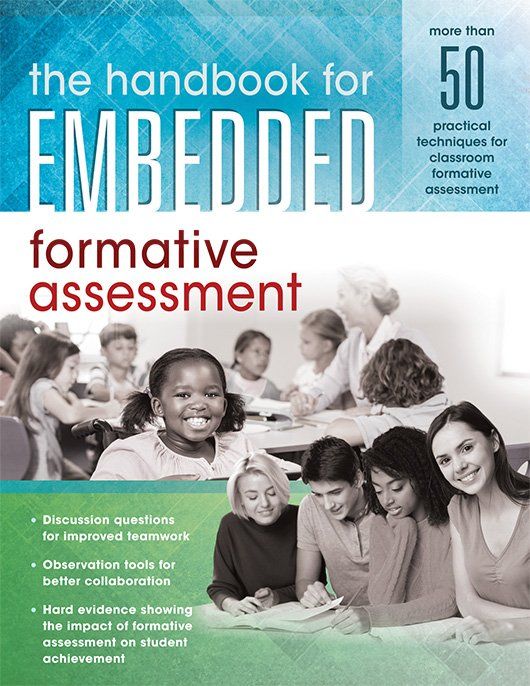
The Handbook for Embedded Formative Assessment
Developed as a companion to Dylan Wiliam’s Embedded Formative Assessment, this practical handbook is packed with proven techniques and how-tos for effective assessment strategies in the classroom. Use this Embedded Formative Assessment study guide in your journey to raise student engagement and academic achievement.
A Practical Guide to Classroom Formative Assessment Strategies
Developed as a companion to Dylan Wiliam’s Embedded Formative Assessment, 2nd ed., this handbook guides K–12 teachers through the process of developing effective formative assessments. Inside its pages, you’ll find tried-and-tested classroom techniques, practical how-tos, and exercises designed to guide implementation. The book also includes discussion questions that can be answered as teams or used for individual reflection.
Learn how to implement the strategies of formative assessment in the classroom:
- Explore research that states classroom formative assessment is the most impactful—and cost-effective—approach to raising student academic achievement.
- Review the five key strategies of classroom formative assessment.
- Gain more than 50 practical techniques for classroom formative assessment.
- Clarify and share learning intentions and success criteria, elicit evidence of student achievement, and give feedback that moves learning forward.
- Understand that teacher quality remains the most important determinant of student engagement and learning.
Related Topics
Additional Information
“The Handbook for Embedded Formative Assessment encourages educators to raise the quality of their classroom learning environments to develop assessment-capable, self-regulated learners. The templates and exercises in each chapter help educators examine their current practices, apply new understandings, and use evidence to continuously improve their teaching, meet student needs, and deepen student learning.”
“The Handbook for Embedded Formative Assessment is poised to become a staple in every teacher’s classroom. Packed with salient research, practical strategies, and user-friendly templates, this handbook should be essential reading for teachers looking to enhance their formative assessment fluency and capacity, and for administrators wishing to transform the collective assessment mindset and culture within their contexts.”
When can I access my eBook? Your eBook will be accessible through VitalSource once your payment has been processed.*
*When using a check or purchase order, the order submitted online will not be processed until Solution Tree receives the check or a copy of the signed official purchase order. Your purchase order must note payment terms of net 30 days. We cannot process purchase orders that do not note these payment terms. Please submit all payments to [email protected].
How do I access my eBook?
To access your eBook:
- Create a free VitalSource account by visiting VitalSource.com. If you already have a VitalSource account, please log in to your account.
- Paste the redemption code that Solution Tree will email you in the “Redemption Code” field on VitalSource.com/Redeem. (Note: You can also access your redemption code within your Solution Tree account under the “eBook” section.)
- Click “Redeem.”
- Enjoy! Once your code is redeemed, your book will be added to your VitalSource Bookshelf and can be read anytime, anywhere.
What are the technical requirements for accessing the eBook? A VitalSource account is required. To sign up for your free account, please visit VitalSource.com.
What if I have trouble accessing my eBook? Please contact VitalSource by emailing [email protected] or by utilizing their Live Chat feature.
What are the shipping and handling costs? There are no shipping or handling costs associated with eBooks. For paperback and hardcover book purchases, standard shipping costs apply. Please visit the Product Orders page for more information on shipping and handling costs.
Can I purchase multiple copies of the same eBook? Bulk orders are not currently available through the website. Website purchases are limited to one eBook per title, per account. If you want to order multiple copies of an eBook, please contact customer support at [email protected].
What if I need to request a refund on my eBook order? RETURN POLICY: We are unable to accept returns or cancel previously placed eBook orders.

